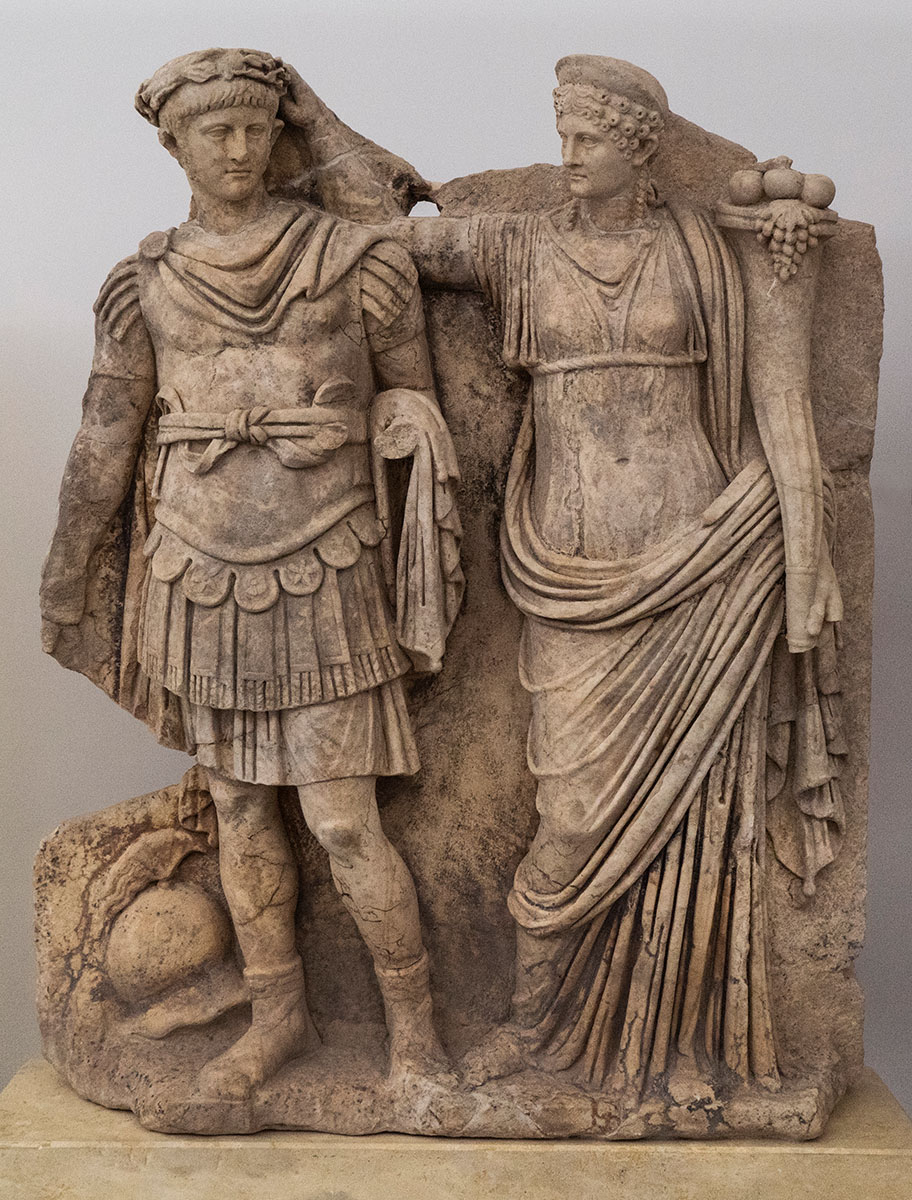
54—58 CE. Aphrodisias, Archaeological MuseumPhoto by Egisto Sani
Nero and Agrippina Minor. Relief from the Sebasteion at Aphrodisias.
54—58 CE.
Aphrodisias, Archaeological Museum.
Nero looks to his left and out of the relief, while Agrippina’s head is turned more, to look at him. The mother is senior and therefore slightly taller; she bestows the wreath on her son, who already has political and military imperium, symbolized by his spear and probably an orb. What is represented, then, is Nero’s promotion from heir to emperor (for which there was no Roman ritual or coronation), portrayed in the symbolic terms of the crowning of a military victor. Such a task could be performed only by a notionally superior authority, either a deity like the Genius of Senate or People or a senior member of the imperial family as here.
The wreath is already firmly on Nero’s head, as it would be on a statue or bust. It has a plain central medallion and is composed of a triple tier of well-worked laurel leaves. He wears a plain moulded cuirass with the normal band (cingulum) tied round the waist, and a short-sleeved tunic beneath the cuirass. Fringed leather arm-straps are shown at each shoulder, and there are seven armoured flaps below the cuirass, four of which are decorated in low relief. Below these hangs the usual skirt of fringed leather straps.
On his feet, Nero wears shoes with “toe-caps” and straps crossing the top of the feet to be wrapped three times round the ankles and tied at the front. These are a clear representation of the patrician calcei worn by Roman senators.
Agrippina wears a thin chiton, belted under the breasts with a narrow twisted band. The dress is of fine material and clings close to the lower torso, revealing the navel. A himation is draped in the normal manner, over her left shoulder, round the opposite hip, and wrapped over the left forearm. In her hair she wears a stephane which is decorated with a small, central, leaf motif in low relief. She holds a large cornucopia in her left hand. The horn contains a central pomegranate.
Both portrait heads were clearly based on official types of Nero and Agrippina that we know well. In both heads, the hair arrangement is a quite detailed and particular rendering, while the face is more generalized.
© 1987. Description: Smith R. R. R., “The Imperial Reliefs from the Sebasteion at Aphrodisias”, The Journal of Roman Studies, Vol. 77 (1987).